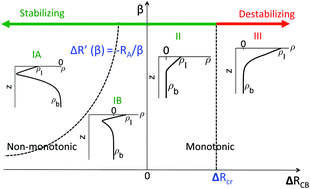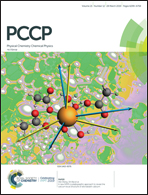Enhanced convective dissolution due to an A + B → C reaction: control of the non-linear dynamics via solutal density contributions
Abstract
Chemical reactions can have a significant impact on convective dissolution in partially miscible stratifications in porous media and are able to enhance the asymptotic flux with respect to the non-reactive case. We numerically study such reactive convective dissolution when the dissolving species A increases the density of the host phase upon dissolution and reacts with a reactant B present in the host phase to produce C by an A + B → C reaction. Upon varying the difference ΔRCB = RC − RB between the Rayleigh numbers of the product C and the reactant B, we identify four regimes with distinct dynamics when the diffusion coefficients are the same. When ΔRCB < 0, the density profiles are non-monotonic and the non-linear dynamics are seen to depend on the relative values of the density at the interface and the initial density of the host phase. For ΔRCB > 0, the monotonic density profiles are destabilizing with respect to the non-reactive case above a certain critical value ΔRcr. We analyze quantitatively the influence of varying ΔRCB and the ratio β = B0/A0 of the initial concentration of B and the solubility of A on the asymptotic steady flux, the wavelength of the fingers and the position of the reaction front. In the context of CO2 geological sequestration, understanding how such reactions can enhance the dissolution flux is crucial for improving the efficiency and safety of the process.



 Please wait while we load your content...
Please wait while we load your content...